Refer figure. Core has refractive index μ1=1.424. The cladding refractive index μ2=1.39. In such a case. Will the light beam propagate?
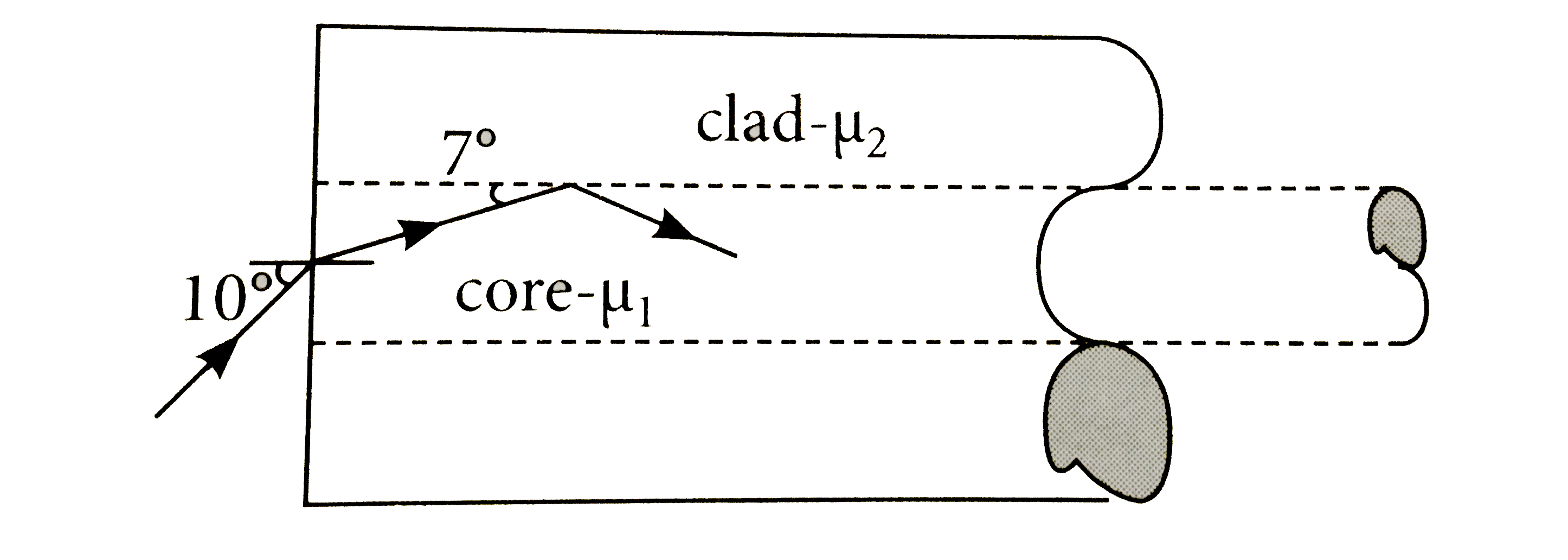
Yes
No
Data given insufficient to decide
the beam propagation is not affected with refractive indices of fibre core and cladding.
The correct Answer is:A
If μ1 is the refractiv e index of c ore of optical fibre, then
μ1=sin10osin7o=0.17360.1219=1.424
Critical angle at core and cladding surface in
sinC=μ2μ1=1.391.424=0.9761=sin77∘27'
C=77∘7'
The angle of incidence on core-cladding surface =90∘−7∘=83∘, which is greater than critical single, hence beam will propagation through optical fibre.
Topper's Solved these Questions
- BOOK - NCERT FINGERTIPSCHAPTER - COMMUNITCATION SYSTEMSEXERCISE - Detection Of Amplitude Modulation Wave12videos
COMMUNITCATION SYSTEMS
- BOOK - NCERT FINGERTIPSCHAPTER - ATOMS EXERCISE - Assertion And Reason15videos
ATOMS
- BOOK - NCERT FINGERTIPSCHAPTER - CURRENT ELECTRICITYEXERCISE - Assertion And Reason15videos
CURRENT ELECTRICITY
Similar Questions
Determine the value of the angle of incident for a ray of light travelling from a medium of refractive index μ1=√2 into the medium of refractive index μ2=1, so that it just grazed along the surface of separation.
View SolutionA thin bi-convex lens made out of a material of refractive index μ1 is place in a medium of refractive index μ2. A paraxial beam of light, parallel to the principal axis of the lens, is shown in the figure. Based on the ray diagram, we can conclude that
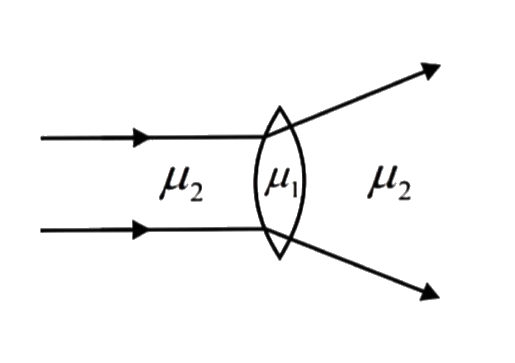 View Solution
View Solution
Knowledge Check
- Question 1 - Select One
A thin symmettrical double convex lens of refractive index μ2−1.5 is placed between a medium of refractiv eindex μ1=1.4 to the left and another medium of refractive index μ3=1.6 to the right.Then the system behaves as
Aa convex lensBa concave lensCa glass plateDa convexo concave lens - Question 2 - Select One
A convex lens made up of material of refractive index μ1, is immersed in a medium of refractive index μ2 as shown in the figure. The relation between μ1 and μ2 is
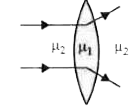 Aμ1<μ2Bμ1>μ2Cμ1=μ2Dμ1=√μ2
Aμ1<μ2Bμ1>μ2Cμ1=μ2Dμ1=√μ2 - Question 3 - Select One
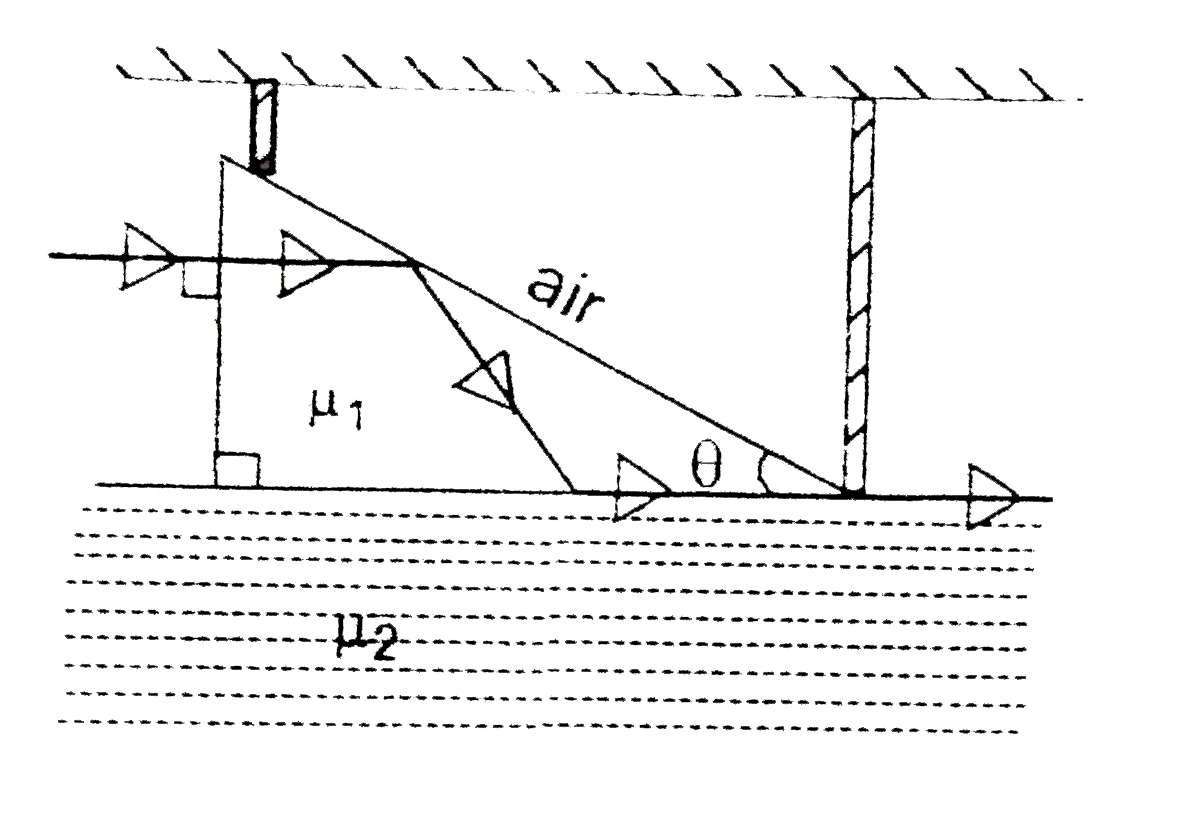
A right angled triangular prism of refractive index μ1 is kept floating on a liquid (surface) having refractive index μ2. The condition such tat light incident normally passes through base of prism as shown in figure.Aμ1=Cos2θ/CosθBμ2=Cos2θ/CosθCμ1=Sin2θ/CosθDμ2=Sin2θ/Sinθ
Statement-1 : A glass convex lens (refractive index, μ1=1.5), when immersed in a liquid of refractive index μ2=2, functions as a diverging lens.
Statement-2 : The focal length of a lens is given by 1f=(μ−1)(1R1−1R2), where μ is the relative refractive index of the material of the lens with respect to the surrounding medium.View SolutionDetermine the value of the angle of incidence for a ray of light travelling from a medium of refractive index μ1=√2 into the medium of refractive index μ2=1, so that it just grazes along the surface of separation.
View SolutionAn equiconvex lens of refractive index μ2 is placed such that the refractive :
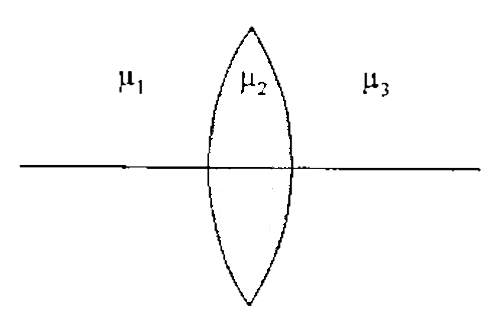 View Solution
View SolutionA sphere of radius R made of material of refractive index μ2 is placed in a medium of refractive index μ1. Where would an object be placed so that a real image is formed at equidistant fromk the sphere? ltbgt
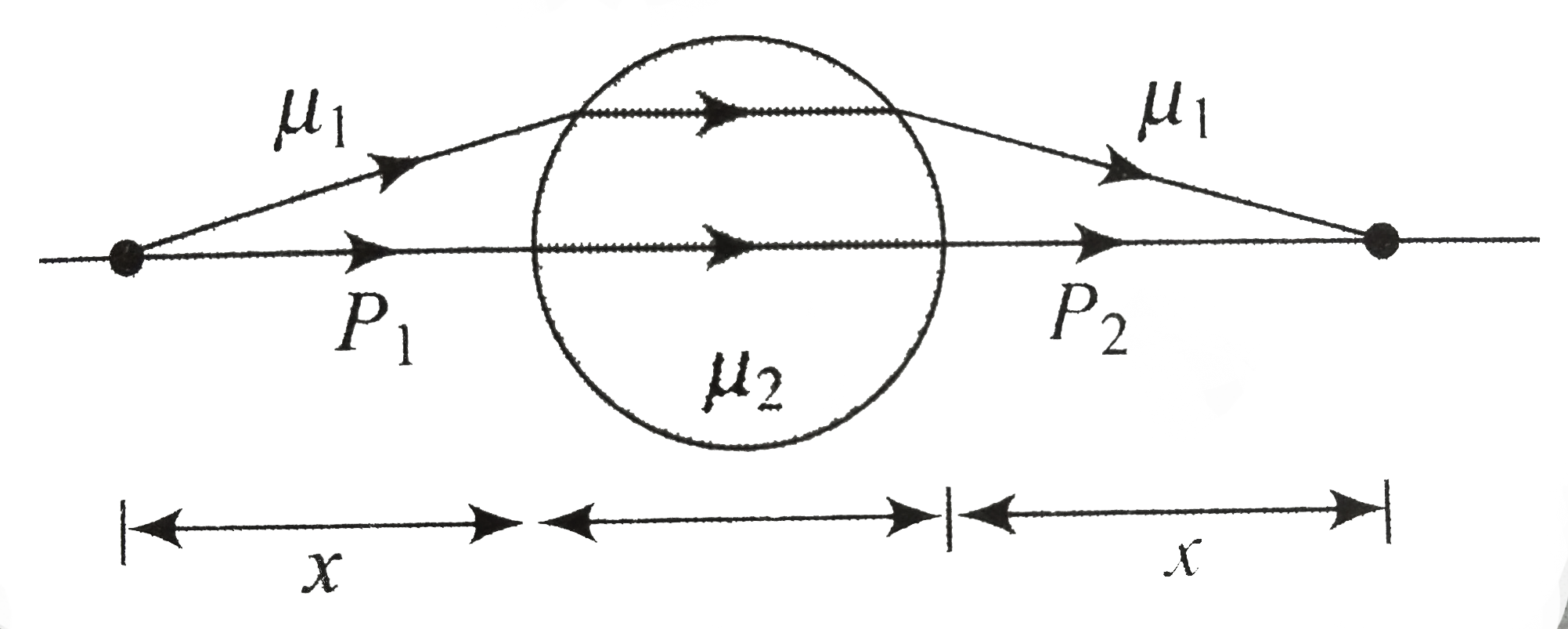 View Solution
View SolutionA thin prism of angle 15∘ made of glass of refractive index μ1=1.5 is combined with another prism of glass of refractive index μ2=1.75. The combination of the prism produces dispersion without deviation. The angle of the second prism should be
View Solution

